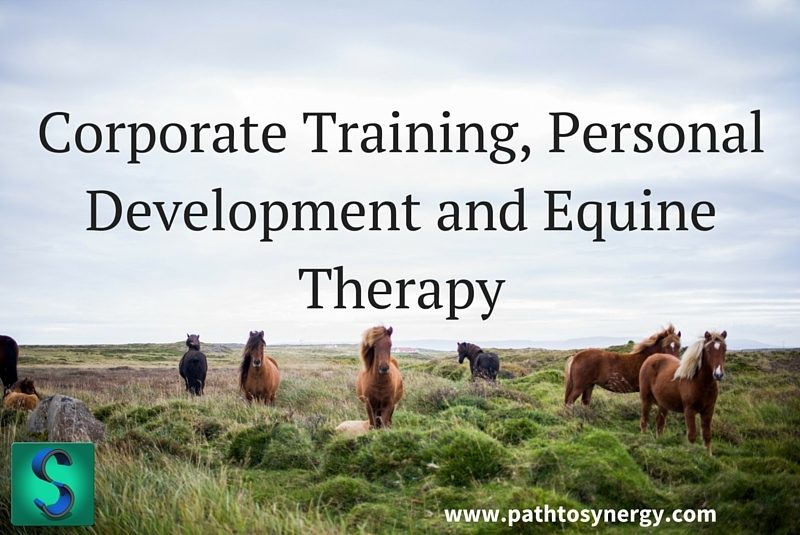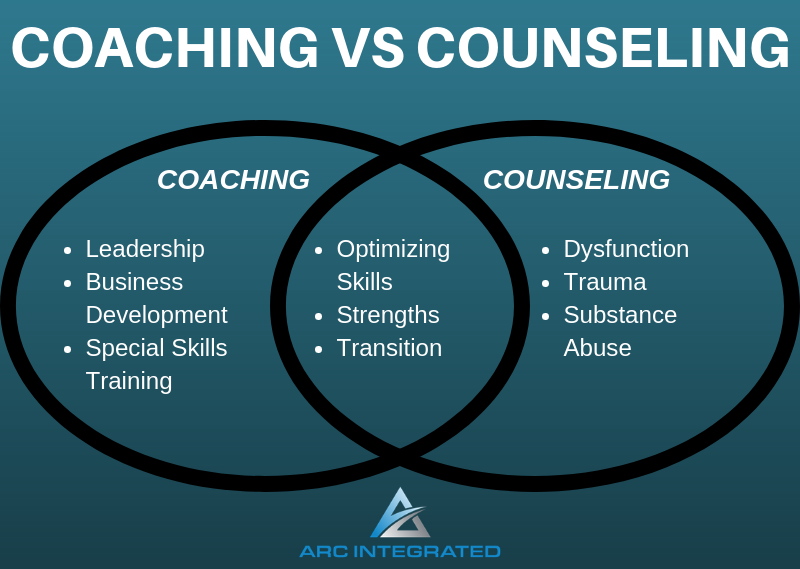Based on the title you may be thinking that these things are totally un-related, but you’re here, so thank you! I lead a group therapy session a couple of times a week with about 10 attendees and the topic of animals and our connection to them recently came up. We discussed different kinds of therapy approaches, like dog therapy, or equine therapy for example. The same day I had a friend bring this topic up, which I figure is enough for me to write down some thoughts, since this is something I have experience with. The interesting part is corporate training, personal development and equine therapy, are in fact, connected.
A few years ago I went through the process of getting certified through the Equine Assisted Growth and Learning Association (EAGALA). This association is the international leader in equine training specifically for mental health and personal development purposes. What this means is that they certify psychotherapists and horse professionals, to work together to facilitate different kinds of experiential learning. These experiences can be for the purposes of individual development, individual therapy, group therapy, couples therapy or corporate/group training.
So the question may be, what one thing has to do with the other? For someone that has never seen this process unfold, it may not seem like a relevant fit. The way horses and horse professionals can help to work through challenges with individuals or a group, is essentially through observation. For example, a typical Equine Assisted Psychotherapy (EAP) or Equine Assisted Learning (EAL) session, consists of the facilitators (therapist and horse professional) giving the individual or group a task to accomplish with the horse. This task could be to help move the horse through a gate, move the horse around an object or help a horse move in a direction without touching it. There are many activities/tasks that can be implemented but they are all ground activities, not requiring the participant to ride the horse.
During and after these activities both the therapist and horse professional make observations of how the person or people are engaging with the horse and each other. What shows up here is powerful. Just like in experiential education, when giving a group a task to accomplish together there are markers that form organically – personality styles, communication style, natural leaders/followers, conflict and/or resolution of conflict etc. What is most interesting about the EAP/EAL process is that the horse acts as a mirror for behavior and engagement.
During my time training as an EAGALA practitioner I was astounded by how fast things came to the surface through this process. For instance, when watching a family interact with an animal and attempt a task, it became immediately obvious what kinds of challenges the family had in their communication with each other. In this example it was easy to see which member wanted to control and override the input from other members of the family. This created conflict of course and made it more challenging for the family to accomplish the assigned task. Part of the feedback came from the horse as it experienced the intensity from one individual. Part of the feedback came from other members as they became frustrated with the challenge of the task, which the horse also reflected. It was powerful to watch.
So how did their communication styles come up you ask? This is the value of working through an EAP/EAL program. The response you get from a horse is authentic, immediate and not bound by the same kind of bias that people have. In addition, the horse professional helps to make observation of behavior of the horse while the therapist observes how the person is engaging.
Horses are able to pick up on the subtleties of behavior and intention because they are sensitive prey animals. So this means that if there is fear, anger, ease, curiosity or frustration – the horse will give feedback to these emotions/behaviors. Because the horse is so sensitive it gives immediate clues and reactions to the behaviors and intentions of individuals and groups. Some of these behaviors would be easily recognized while others are more subtle, which is why it is helpful to have a horse professional present. In the therapeutic context, understanding and processing behaviors and emotions can impact personal development and resolution of some of the challenges.
At this point you may be asking if this type of intervention has any credibility from research. The answer is yes, it absolutely does. For example, one study found that well-being and reduction in psychological distress immediately improved after EAP and held stable after six months. For a more detailed look at research as it compares to traditional therapy approaches, consider this article that acts an overview and comparison.
So how does this therapeutic approach have anything to do with corporate training or leadership? This is where EAL enters the picture. EAL differs from EAP in that EAL focuses more on education and learning rather than a therapeutic approach of resolving mental health issues or challenges.
In an EAL setting valuable skills can be obtained that would certainly impact the effectiveness of an organization. For example, often times EAL is done with teams on an organization in order to improve communication skills, leadership or team building. This process is still facilitated by a mental health professional and horse professional, but the intention is different.
In an EAL session with a team of professionals for instance, a simple task will be given to the team to accomplish with the horse. This task results in emerging behaviors and communication styles that will then be valuable for the team to later process. For instance, within a given task there may be leaders that emerge, communication that happens (or doesn’t), response style of collaboration or anger. In addition, there may be partnerships that naturally form on the team that previously did not exist or resentments that manifest that perhaps hadn’t previously.
The same question may emerge regarding efficacy of this particular kind of experiential education. One of the more interesting pieces of research on EAL has to do with Emotional Intelligence, a current point of focus in many leadership and team building approaches. This research is a great review of the field of EAL as well as Emotional Intelligence. The research found positive results for EAL as an intervention for improving Emotional Intelligence.
So, as we’ve seen, horses, therapy and leadership are in fact related! For more information about EAL and EAP, I recommend visiting the EAGALA website – http://www.eagala.org/. For more information on Emotional Intelligence as it relates to leadership, consider this article by Daniel Goleman. If you are interested learning more about this topic or discussing a potential workshop to build team or leadership skills, please contact us!
Keep Learning,
Michael
P.S. If you are curious to learn more about personal development, workplace challenges, interpersonal dynamics, goal achievement and a wide variety of other topics, sign up today! www.www.arcintegrated.com/newsletter. It’s totally free.
You’ll also receive a FREE tip sheet with Five Strategies to Build Motivation!




